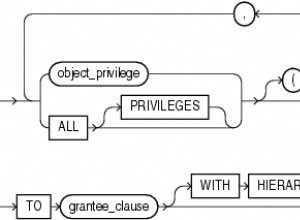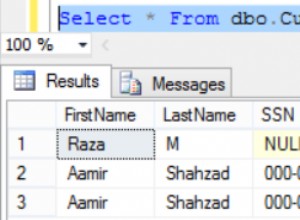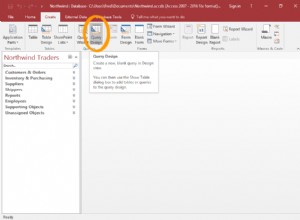Dans le nouveau PostgreSQL 8.4 vous pouvez le faire avec un CTE :
WITH RECURSIVE q AS
(
SELECT h, 1 AS level, ARRAY[id] AS breadcrumb
FROM t_hierarchy h
WHERE parent = 0
UNION ALL
SELECT hi, q.level + 1 AS level, breadcrumb || id
FROM q
JOIN t_hierarchy hi
ON hi.parent = (q.h).id
)
SELECT REPEAT(' ', level) || (q.h).id,
(q.h).parent,
(q.h).value,
level,
breadcrumb::VARCHAR AS path
FROM q
ORDER BY
breadcrumb
Voir cet article sur mon blog pour plus de détails :
En 8.3 ou plus tôt, vous devrez écrire une fonction :
CREATE TYPE tp_hierarchy AS (node t_hierarchy, level INT);
CREATE OR REPLACE FUNCTION fn_hierarchy_connect_by(INT, INT)
RETURNS SETOF tp_hierarchy
AS
$$
SELECT CASE
WHEN node = 1 THEN
(t_hierarchy, $2)::tp_hierarchy
ELSE
fn_hierarchy_connect_by((q.t_hierarchy).id, $2 + 1)
END
FROM (
SELECT t_hierarchy, node
FROM (
SELECT 1 AS node
UNION ALL
SELECT 2
) nodes,
t_hierarchy
WHERE parent = $1
ORDER BY
id, node
) q;
$$
LANGUAGE 'sql';
et sélectionnez dans cette fonction :
SELECT *
FROM fn_hierarchy_connect_by(4, 1)
Le premier paramètre est la racine id , le second doit être 1 .
Voir cet article sur mon blog pour plus de détails :
Mise à jour :
Pour afficher uniquement les enfants de premier niveau, ou le nœud lui-même si les enfants n'existent pas, lancez cette requête :
SELECT *
FROM t_hierarchy
WHERE parent = @start
UNION ALL
SELECT *
FROM t_hierarchy
WHERE id = @start
AND NOT EXISTS
(
SELECT NULL
FROM t_hierarchy
WHERE parent = @start
)
C'est plus efficace qu'un JOIN , puisque la deuxième requête ne prendra que deux parcours d'index au maximum :le premier pour s'assurer de savoir si un enfant existe, le second pour sélectionner la ligne parente si aucun enfant n'existe.




